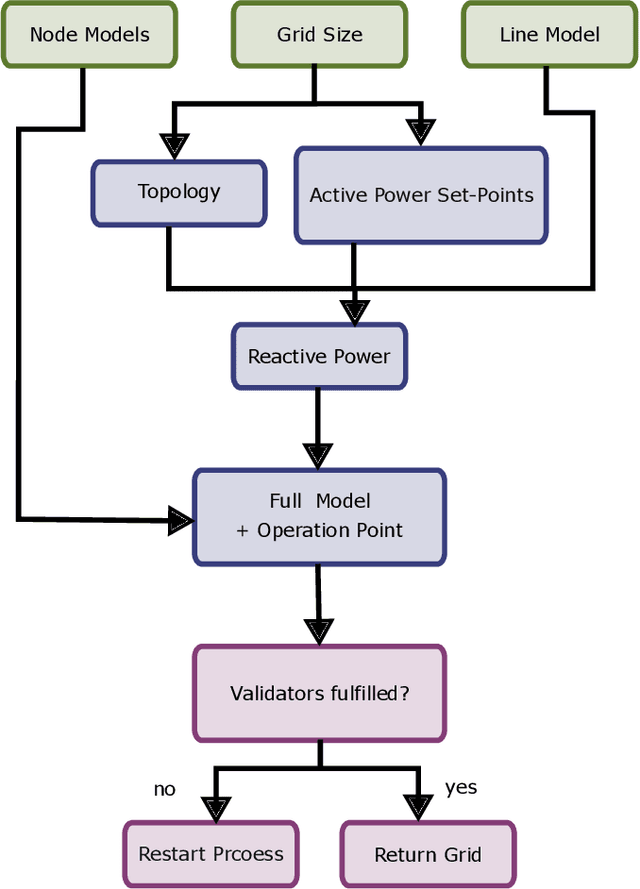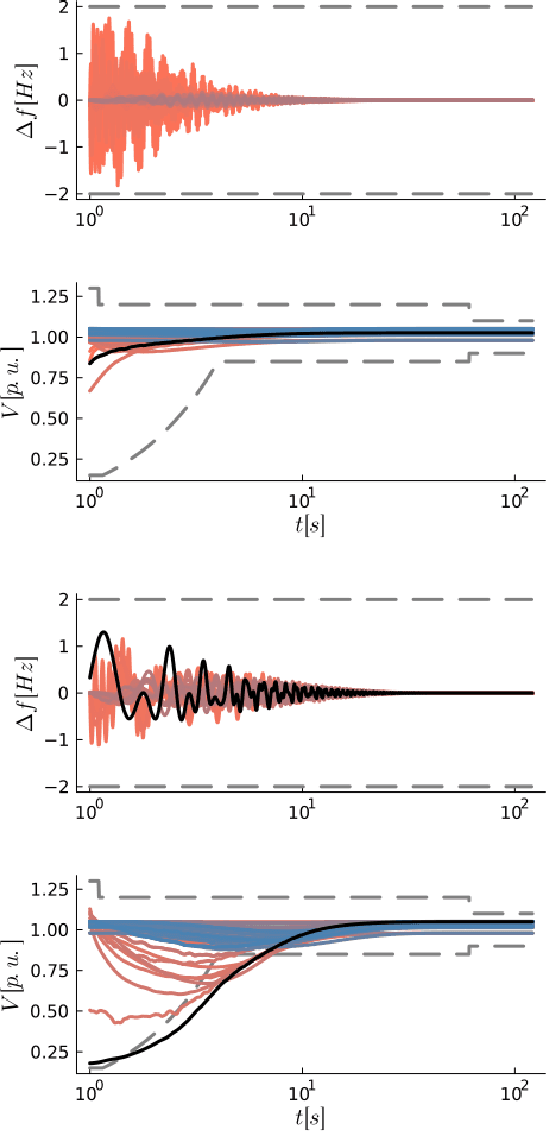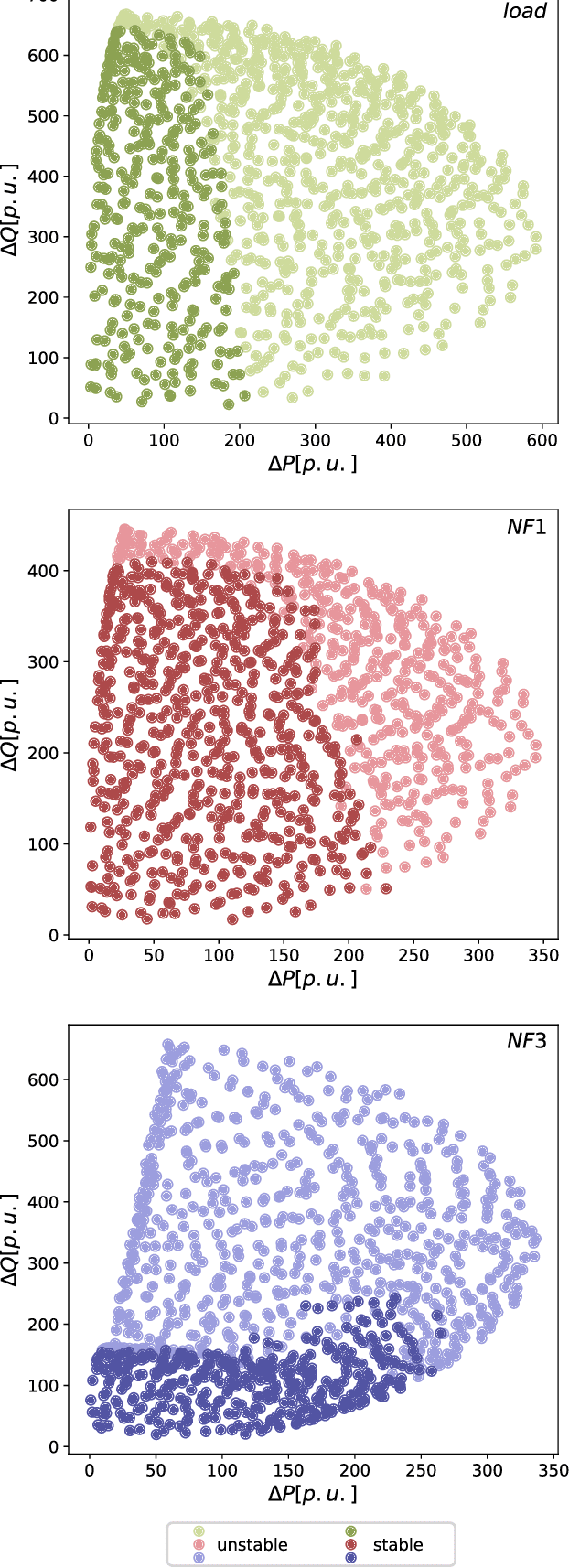Sebastian Liemann
Predicting Fault-Ride-Through Probability of Inverter-Dominated Power Grids using Machine Learning
Jun 13, 2024



Abstract:Due to the increasing share of renewables, the analysis of the dynamical behavior of power grids gains importance. Effective risk assessments necessitate the analysis of large number of fault scenarios. The computational costs inherent in dynamic simulations impose constraints on the number of configurations that can be analyzed. Machine Learning (ML) has proven to efficiently predict complex power grid properties. Hence, we analyze the potential of ML for predicting dynamic stability of future power grids with large shares of inverters. For this purpose, we generate a new dataset consisting of synthetic power grid models and perform dynamical simulations. As targets for the ML training, we calculate the fault-ride-through probability, which we define as the probability of staying within a ride-through curve after a fault at a bus has been cleared. Importantly, we demonstrate that ML models accurately predict the fault-ride-through probability of synthetic power grids. Finally, we also show that the ML models generalize to an IEEE-96 Test System, which emphasizes the potential of deploying ML methods to study probabilistic stability of power grids.
Power Response and Modelling Aspects of Power Electronic Loads in Case of Voltage Drops
Jul 08, 2022



Abstract:In this paper, the power response of power electronic loads in case of voltage drops are measured and their dynamics are analysed. Based on this, dynamic simulation models are derived which can be used for voltage stability investigations. For this, four loads with different power factor techniques are considered. In addition, the impact of the grid impedance and input filter on the power response are measured in the laboratory. Based on the measurements, the simulation models are described. It is also outlined under which aspects the components of the loads are normally dimensioned if no detailed information is available. A comparison with the measurements demonstrates that the simulation models capture the main dynamics. At the end of the paper, the load models are compared to a constant power load in a short-term voltage stability use case. The results indicate that the power electronic loads have a more positive influence on short-term voltage stability in case of voltage drops. Overall, the contributions of the paper are the identification of the basic power dynamics of power electronic loads for different voltage drops and a subsequent derivation of suitable simulation load models for voltage stability investigations.
 Add to Chrome
Add to Chrome Add to Firefox
Add to Firefox Add to Edge
Add to Edge